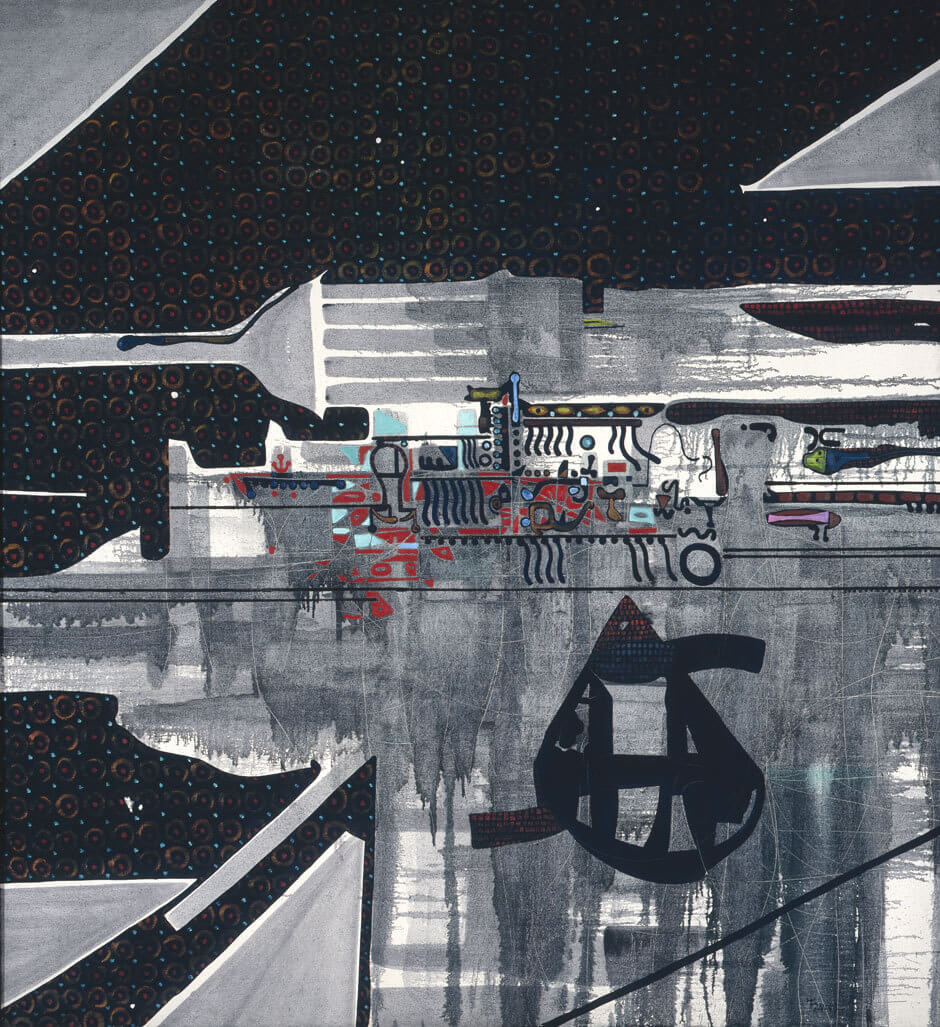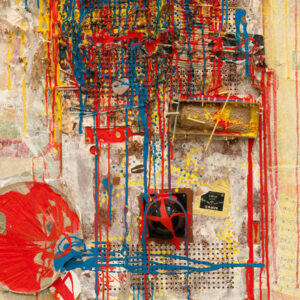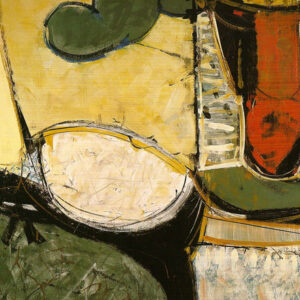Tyranny of the Corner 1962

Harold Town, Tyranny of the Corner (Sashay Set), 1962
Oil and Lucite on canvas, 205.7 x 188.7 cm
National Gallery of Canada, Ottawa
In 1962 Town began a series of large formal canvases that depart from his lush and spontaneous Abstract Expressionist handling of paint. He set a number of predetermined rules to govern the composition. As the title informs us, the corners are to be the starting point. He places a triangle in each one—though the top right triangle has slipped down slightly, and the one in the lower right has slid far to the left. Before starting to paint on the primed canvas, Town applies thin washes of blue-black paint at the centre and tilts the surface to make the paint run. This creates an area of chance, of amorphous shapes. He fills in parts of the canvas in black, creating a figure-ground tension at the irregular edges where the black ends and the grey ground seems to invade it. The black areas would tend to recede and be read as background were it not for the pattern of painted rings and dots that sits on their surfaces.
These rings, which Town jokingly called “doughnuts,” recall the symbol for trees on architectural ground plans, an association that was confirmed for Town when he took his first airplane flight around this time and saw woodlands from above. Across the grey area near the top, a mechanical form—some kind of tailpipe? shower head? paintbrush?—seems to be moving from right to left, tracing a set of parallel lines. Beneath this is a register of small animated black shapes and lines and colour touches, like wiring on a primitive electronic circuit board, or symbols in some primeval alphabet. A larger hieroglyphic shape seems to loom toward us, almost like a comic cartoon figure. All these animated entities are held together by the insistent repetition of diagonal, horizontal, and vertical lines that echo the edges of the four corner triangles, yet as heterogeneous elements each seems to come from a separate lexicon. They do not add up to a coherent meaning. It is impossible to say what this abstract composition means, but it addresses us with an insistent rhythm of black and white and pattern, against a breathing, organic, amorphous space.

 About the Author
About the Author
 More Online Art Books
More Online Art Books
 Acknowledgements
Acknowledgements